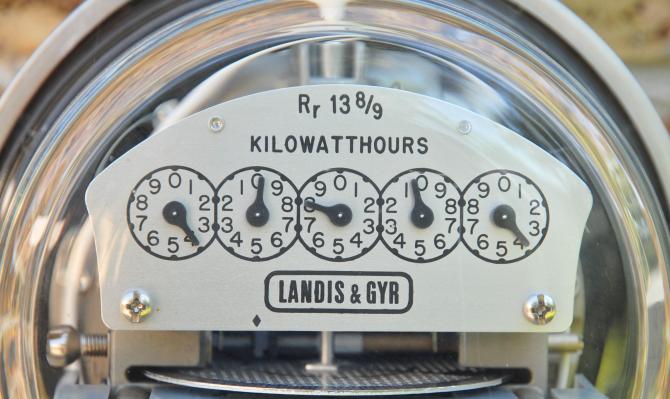
Electricity prices are sky high, but what about household bills?
We analyse individuals’ electricity bill direct debit payments made from CaixaBank accounts to determine how the increase in prices affected the finances of Spanish households.
2021 was a turbulent year in the electricity market.1 Prices rose alarmingly beginning in July and the year ended with the megawatt hour (MWh) at around 300 euros in the wholesale market.2 In an attempt to reduce the impact of this price increase on consumers, the government implemented several tax measures, such as a VAT reduction and a temporary suspension of the electricity production tax. At the same time, the rates by hourly tranche throughout the day were also modified to encourage more efficient energy use. So the question is, what was the final impact on the pockets of households?
To answer it, we looked at the direct debit electricity bill payments of individual CaixaBank customers.3 Of course, the amount that a household pays for its electricity bills depends on many factors: the amount of energy consumed, the price of that energy, the taxes in force, the contracted tariff, etc. In the end, however, what affects household consumption is the amount they end up paying for their energy supply at any given time. Yet, despite everything that has happened, the median electricity bill during 2021 was quite similar to that of 2018,4 a pre-pandemic year with wholesale market prices similar to those of the first half of 2021. In Q1 2021, the median electricity bill (i.e. the amount at which half of households paid less and half paid more) was 68 euros, the same amount as in Q1 2018. In Q4 2021, the median bill amounted to 60 euros, which was 3.6% lower than the median bill in Q4 2018.
- 1For more details on the factors behind the rise in electricity prices, see the Focus «The impact of the rise in electricity prices on the Spanish economy» in the MR12/2021.
- 2In the first half of 2021, the average price per MWh in the wholesale market was 60 euros.
- 3To do this, we added together the direct debit electricity bill payments for each individual customer each month (we excluded companies and self-employed workers). We also differentiated between customers on free-market tariff contracts (usually with a fixed price for the duration of the contract) and those on the regulated PVPC tariff with one of the suppliers offering these regulated prices (see https://sede.cnmc.gob.es/listado/censo/10).
- 4For 2021 as a whole, the median average bill stood at 743 euros, compared with 748 euros in 2018 (–0.6%, and –5.1% after adjusting for inflation).

The median bill on the free-market tariff decreases, while that of the regulated market increases
However, this outcome changes dramatically if we analyse it based on the type of contract each household has. In the regulated market, which corresponds to 39% of households,5 the median bill in Q4 2021 amounted to 54 euros, 13% higher than in Q4 2018 (+28% compared to Q4 2019 and +32% compared to Q4 2020).6 In the free market, on the other hand, the median bill in Q4 2021 fell to 61 euros, 16% less than in Q4 2018 (–18% compared to Q4 2019 and –14% compared to Q4 2020).7 These marked differences are due to the fact that, in the free market, energy prices are fixed for the period established in the contract and are only updated when the contract is renewed, so the tax cuts have benefited households on this type of contract. In the regulated market, in contrast, energy prices are variable and change every day and every hour (corresponding to the so-called voluntary price for small consumers, or PVPC in Spanish), so the price increases have been transmitted quicker to consumers’ electricity bills and have exceeded the tax cuts.
- 5i.e. of private consumers with a contracted capacity of less than 10 kW (Electric Indicators Bulletin, November 2021, CNMC).
- 6For 2021 as a whole, the median average bill in the regulated market stood at 579 euros (559 euros in 2018).
- 7For 2021 as a whole, the median average bill in the free market stood at 861 euros (902 euros in 2018).


The increases in electricity bills are concentrated among households with greater electricity consumption in the regulated market
If we analyse the question based on what consumers spent on their electricity bills, we see a widespread reduction in the amount paid by those on free-market tariffs in Q4 2021, among both lower bills and higher bills. Specifically, bills in the 10th percentile (25 euros) were 21% lower than in 2018, while in the the 90th percentile (142 euros) they were 12% lower than in Q4 2018. In the regulated market, in contrast, the higher bills are more adversely affected by the higher energy prices. The 90th-percentile bill (119 euros in Q4 2021) was 22% higher than in Q4 2018, a significantly higher increase than the median bill. On the other hand, the temporary price reduction for consumers benefiting from the social credit can be seen in lower-value bills: the 10th-percentile bill in Q4 2021 (18 euros) was 18% lower than in Q4 2018.
In short, 2021 was a roller-coaster year for electricity bills, but it did not affect all consumers alike. As for 2022, it does not look like it will be any less turbulent. Part of the price increase in the wholesale market in 2021 could be transmitted to the free market as contracts are renewed, although if prices in the wholesale market are reduced, this effect will be temporary. What seems clear is that electric bills will continue to give fuel to the conversation.




